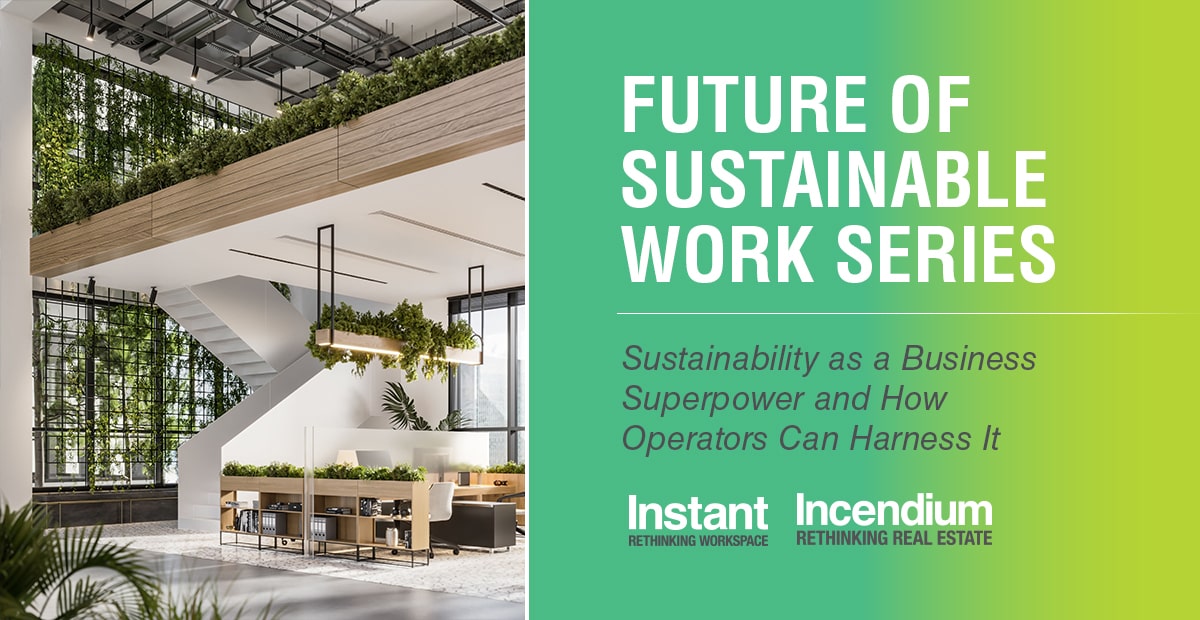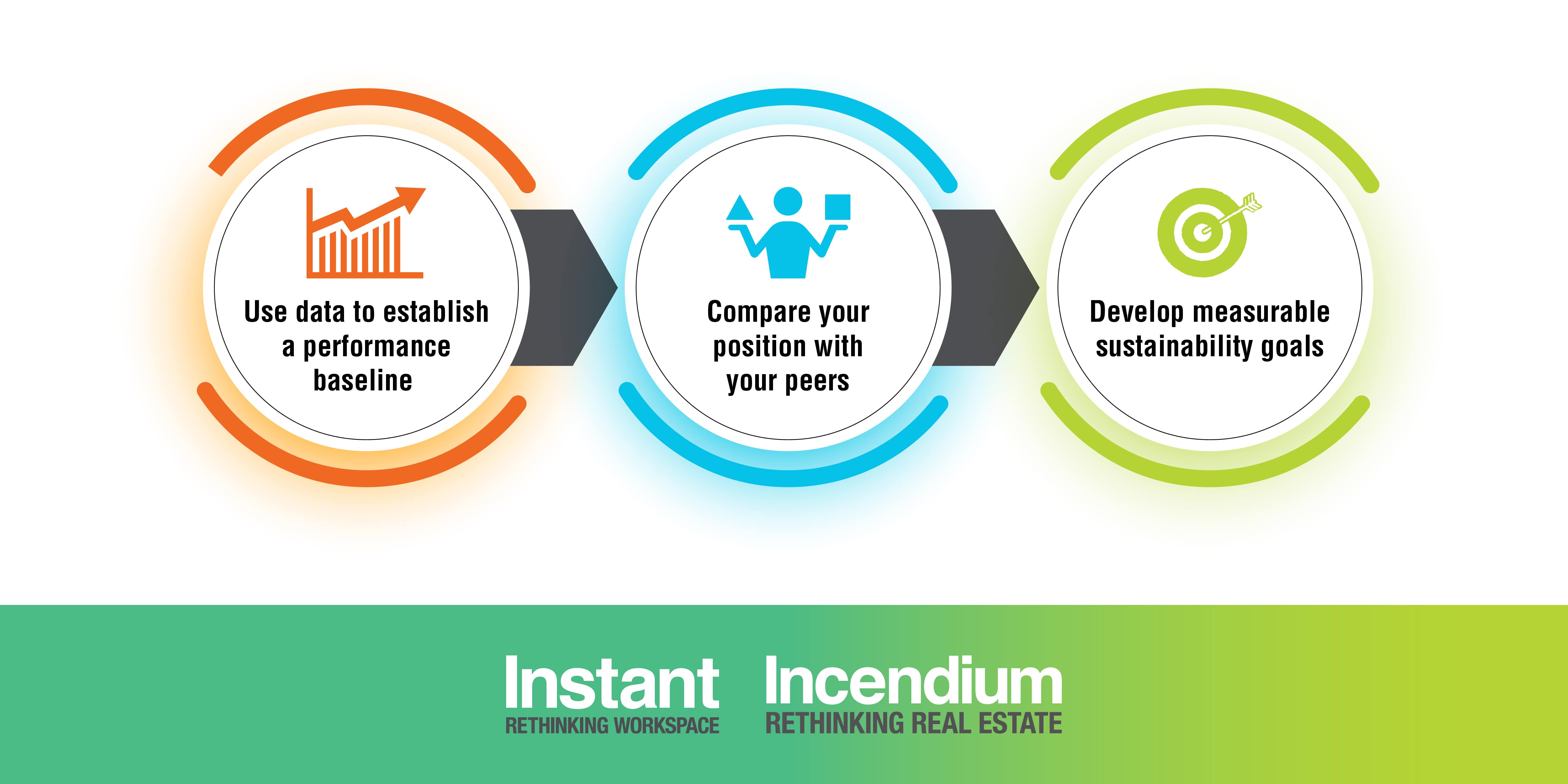Without a genuine sustainability strategy, companies will be shut off from customers, markets, and financing. We present three steps for operators and landlords to forge a strong foundation for sustainable outcomes.
By Mike Bascombe, Principal Consultant at Incendium Consulting
_________________________________________________________

The world is shifting to a low carbon economy. Products, services, supply chains, business models, and the financing behind all of these is moving away from current operating procedures as it becomes ever clearer the status quo is untenable. Assets will become stranded, finance will re-evaluate what a sensible investment looks like, and talent will flow towards companies that align with personal visions of purpose.
This is all already happening, but the pace of change is now accelerating to the point where industries are shifting. The World Resources Institute’s recent report shows progress towards a sustainable climate is far behind targets in every measurable respect. This means that businesses will have to adapt even more quickly than originally predicted.
The built environment as a whole and specifically the CRE sector is no exception. Operators and landlords are generally far behind the curve in terms of sustainability, especially in terms of developing meaningful Science Based Targets at a corporate level. Disclosure through CDP is low; however, the potential for making positive change is massive.
According to the UK Green Building Council (UKGBC), the built (or property) sector could account for 40% of all carbon emissions in the UK. Globally, the energy use alone from office buildings is 6.6% of all tCO2e emissions, and this doesn’t even account for materials like steel and concrete production that the sector provides a market for.
These numbers alone should act as a catalyst, but we haven’t even touched on the good news yet: sustainability is exceptionally good for business.
SUSTAINABILITY'S BUSINESS ADVANTAGE
I always break down the business case for sustainability into two sides of the same coin — one side is inbound: the pressure to act; the other is outbound: the opportunities to realize.
The increase in regulation around sustainability is real and is pushing companies towards more sustainable practices. In the UK, the government’s Net Zero target for 2050 has filtered down to any suppliers hoping to land a government contract also needing a similar if not more ambitious target.
Moreover, investor value is now directly linked to sustainability performance. BlackRock CEO Larry Fink’s letter in January 2021 is a brilliant breakdown of why sustainability equals value and underscored how access to finance was now dependent on going green. Anyone wanting affordable corporate backing was going to have to demonstrate sustainability credentials and a viable strategy.
Without a genuine sustainability strategy, companies are shutting themselves off from customers, markets, and financing. As Apple demonstrated recently big contracts are now requiring supply chain partners to have sustainability goals in place. To work with the market leaders, you have to be part of their solution. Sustainability opens the door.
But the flip side is more exciting and where I choose to spend more of my time when talking with clients, and that’s the advantages of sustainable practices for a company’s talent and culture. In many ways, sustainability is a business superpower.
The first and easiest-to-see advantage in creating a company purpose with sustainability as a core value is talent acquisition and retention. Every successive generation is more opinionated on climate issues and more willing to vote with their wallets. As access to top talent proves ever harder, the most sought-after individuals will choose companies that they feel are acting with moral purpose.
By now, most are aware of Patagonia’s credentials in this space, and with that has come a gigantic magnet for talent that ensures the company’s viability into the future. Thus, one of sustainability’s most powerful effects on business is the galvanizing effect it has on staff morale and motivation. Keeping the talent in-house is so much easier when people feel aligned to goals that matter to them.
Additionally, innovation is a key differentiator of the world’s most successful brands, and sustainability acts as a powerful force towards creativity. A brilliant example of this is Nike’s Flyknit technology. Nike is pursuing an industry-leading sustainability plan that drove the development of this new material. Seeking to reduce waste and emissions in production, Nike created a new fabric where “sustainability is synonymous with performance.” The brand has also created a new product to attract a more environmentally-conscious customer base.
HOW DO OPERATORS AND LANDLORDS GAIN ACCESS TO SUSTAINABILITY?
It is clear that sustainability is a force that needs recognition and engagement from all businesses. We suggest the following steps to create a strong foundation for office operators and landlords aiming to begin the sustainability journey.

STEP ONE: Use data to establish a performance baseline
The carbon reporting landscape has slowly but surely reached a place where best practice can be defined. The WRI reporting protocols which serve as the framework within which to create a carbon footprint break up the emissions into three scopes;
Scope 1: Direct emissions from owned/controlled operations
Scope 2: Indirect emissions from the use of purchased electricity, steam, heating, and cooling
Scope 3: The value chain split into 15 sub categories
Understanding where your emissions sit within these areas allows for a targeted and efficient reduction approach. You can’t change what you don’t measure, so creating a baseline measurement of the company’s operations is the best place to start.
STEP TWO: Compare your position with your peers
Understanding how your industry and peers engage in sustainability is vital — not from the position of matching their ambition, but from the far more powerful lens of learning from their engagement and seeing how effective it is.
Applying what works for others to your own path to reduced emissions should be adopted and ideally a sector wide approach of best practices developed and shared.
STEP THREE: Develop measurable sustainability goals
With the chameleon-like nature sustainability can seem to have, deciding on a corporate wide goal is essential in driving progress and real impact. There are so many options open to companies when deciding how to engage with sustainability. Do we target efficiency in our buildings? Have we developed a policy on circularity and waste?
It can easily lead to companies taking on several siloed projects all whilst under the banner of sustainability, which are not truly uniformly pointed at an end goal. Keeping a consistent message across all of these can be extremely difficult with the risk of conflicting internal targets and priorities creating roadblocks across several projects at once.
Unifying a set of workstreams aligned to all support a wider but defined target will ensure efficiency — efficiency in time, resourcing, risk management and undoubtedly cost.
Operators and landlords can thus play a key role in corporate sustainability targets as well as driving down real-world emissions. The carbon footprint reporting structure is designed to keep everyone’s emissions linked via Scope 3.
When reduced to its most simple terms, this means your supply chain’s emissions are your responsibility. All three scopes must be accounted for to comply with a Science Based Target approach.
Any occupier or client who is tackling their own sustainability journey will need partners who can support them as part of a value chain that in time can reduce emissions by 90% by 2050. Office space suppliers will need to feed into this journey through data provision, decarbonization and efficiency management or risk alienating any potential client who has a sustainability target.
